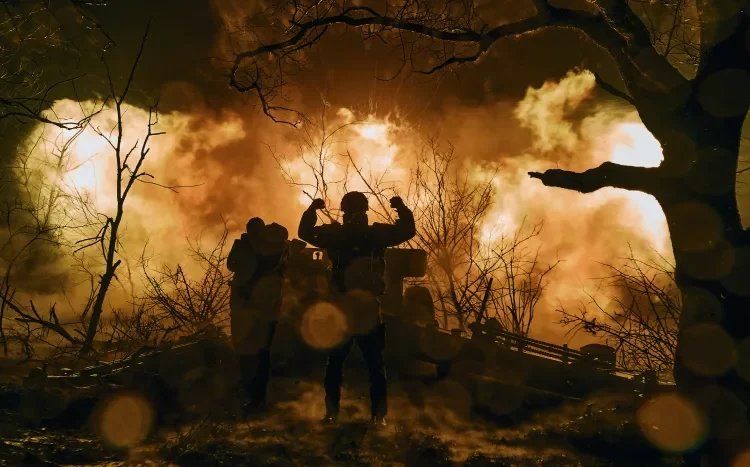NIKOPOL, Ukraine — On the 500th day since Russia’s attack and as the war grinds on, Ukrainian forces are advancing slowly without enough arms and ammunition and with its main cities under constant threat.
Since the beginning of June, Ukraine’s army has been on the offensive to reconquer territory captured by Russian forces in the east and the south.
While suffering losses, Russian forces are putting up a ferocious resistance.
Russian forces “have built solid fortifications, they have a lot of equipment,” said Antonina Morakhovska, a 73-year-old retired teacher in the city of Nikopol in southern Ukraine.
“I see how our forces advance. It’s not easy for them in this heat. I think about them all the time, poor things.
Despite receiving billions of euros in Western military aid, the Ukrainian army has only managed to take back around a dozen villages and a few hundred square kilometres of territory since the start of the attack.
There is no comparison to last year when Ukraine’s forces re-captured 9,000 square kilometres in the Kharkiv region in September and 5,000 square kilometres in the Kherson region in November.
In the run-up to a Nato summit next week, Ukrainian President Volodymyr Zelensky has pressed Western powers for long-range weapons and F-16 fighter jets.
“The offensive is not fast, that is a fact. But nevertheless we are moving forward,” he said during a visit to Prague this week.
Ukraine’s military commander-in-chief Valery Zaluzhny has also expressed frustration at the slow deliveries of promised weaponry from the West.
It “pisses me off” that some in the West complain about the slow start and progress of the long-awaited push against Russian forces, Zaluzhny told The Washington Post last month.
At a street market in Nikopol, Lyudmila Shudinova, 82, said her thoughts were focused on her 49-year-old son, a volunteer fighter recovering from a wound.
She said she had come to buy him potatoes.
“I am very scared that, after he heals, he will again be sent to the front,” she said, with tears in her eyes.
Ukrainians remain united in the effort to repel Russian forces but their resilience is constantly being tested.
The UN has documented the deaths of 9,000 civilians, including more than 500 children, in the conflict so far.
The real toll could be much higher.
Despite a significant strengthening of Ukraine’s air defence capability this year, the threat of drone and missile attacks across the country is constant.
In June, a missile hit a restaurant in Kramatorsk in the east killing 13 people, and on Thursday 10 people were killed in a strike on the western city of Lviv, which has so far been spared the daily bombardment of other parts of Ukraine.
The city of Nikopol near the front line in the south is also regularly hit by Russian forces and half of its pre-war population of 100,000 people has left.
It lies on the western shore of the Kakhovka reservoir — just 10 kilometres from the Zaporizhzhia nuclear power station which has been under the control of Russian forces since March 2022.
In the last few days, the threat of a nuclear disaster has loomed large in the region as Moscow and Kyiv accuse each other of preparing to blow up the plant.
The region has already been badly hit by an explosion at the Kakhovka dam on June 6 which caused significant flooding and killed dozens of people.
Ukraine has accused Russia of blowing up the dam intentionally to slow down the counteroffensive.
Upstream from the dam, the Kakhovka reservoir — 100 kilometres long and up to 10 kilometres wide — is running low.
Several areas, like Nikopol, have had their drinking water cut as a result.
Wearing an elegant white hat under a baking hot sun, Morakhovska spoke to AFP at a water distribution point to fill up some canisters with drinking water.
An air raid siren went off as Morakhovska spoke, provoking an emotional reaction from the Nikopol resident living under constant threat of Russian bombardment.
“When the alarm goes off like that, I always think the same thing. May you (Russian) bastards all die,” she said.






Discussion about this post